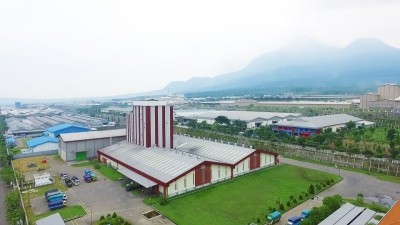De Heus looks to strengthen its foothold in West Africa

The plant will e located on a 500 acre-site in Tema, near Accra; the company said the new factory would be one of the largest compound feed production plants in Ghana, with a production capacity of up to 90,000 tons a year.
It will be the Dutch group’s first plant in West Africa.
The mill will have capabilities to produce multi-species feeds, said a spokesperson for De Heus.
“Taking our current sales in Ghana into account, we will produce mainly poultry and fish in this plant,” he told us.
The factory is set to be up and running within a year, he said.
Ghana is of interest to De Heus for a number of reasons, he continued, but the principal one is the fast population growth in that country and in West Africa in general.
“Currently, there are about 50 million people living in Ghana and the Ivory Coast. It is expected that the population [of those two countries combined] will double to almost 98 million citizens in 2050.
“That enormous demographic pressure results in a major challenge for the regional food supply. Regional livestock farming will have to professionalize in order to respond to this rapidly growing demand for food. Based on our expertise, we strongly believe that we can contribute to further strengthening local livestock farming.”
Layer feed dominates
Ghana’s poultry feed industry is mostly focused on the layer sector, according to a USDA report from May 2017.
“About 80% of feed produced by commercial feed millers is layer feed.”
The USDA estimated then that Ghana's 2017 broiler meat production would reach 35,000 tons, supplying less than 25% of demand. Imports were expected to increase by 14,000 tons to 158,000 tons due to insufficient domestic supply and rising demand. US poultry meat exports to Ghana, as per that data, had more than 35% market share, with competition from Brazil and the European Union on the increase.
The main imported feed ingredients are yellow corn, soybean meal, fishmeal and vitamin-mineral premixes, noted the USDA. The locally available feed ingredients are corn, soybean cake, cottonseed cake, kernel cake, copra cake, fishmeal and oyster shell.
Cost effective quality fish feed lacking
The fish farming sector has been growing in Ghana, with the sector getting a boost from a government and World Bank-funded fisheries program.
Aquaculture production in Ghana grew from over 32,512 MT/y in 2013 to 52,470.49 MT/y, representing 11.3% of the national harvest, in 2016. Aquaculture production is projected to hit 72,000 tons, representing 15% of national fish production, in the next three to five years, found a recent paper.
One of the major challenges in Ghana's aquaculture is the lack of efficient and inexpensive feeds for all stages of fish growth, according to that report.
As a result of the increasing demand for fish feed, most feed sold is below standard, while the formulation of farm-made feeds mainly depends on the costs of ingredients rather than the nutritional requirement of the fish, said the authors.








